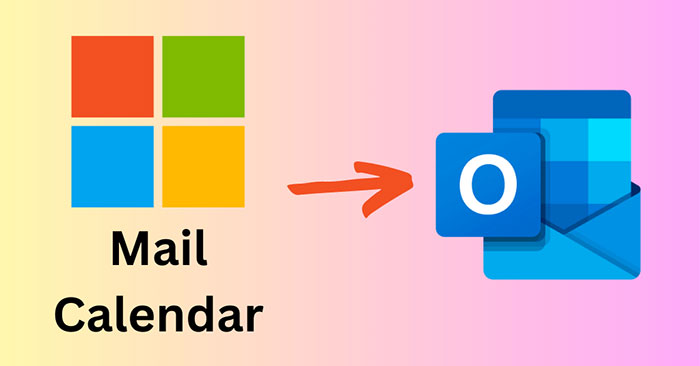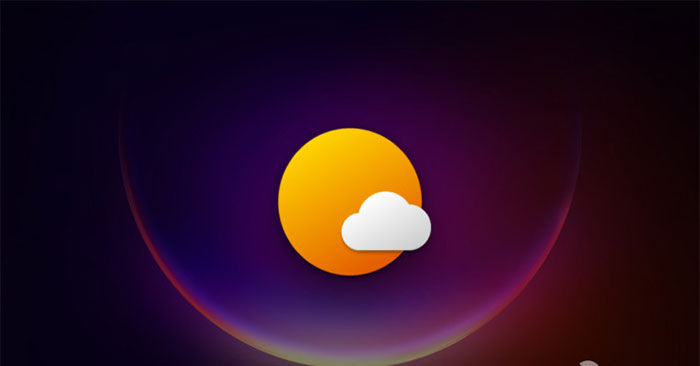On this day 30 years ago, Windows NT 3.1 came out
Windows itself is also built on top of MS-DOS for backward compatibility with older applications.
However, the real plan that the company wanted at that time was to create a new operating system, combining the improved graphical interface of Windows and at the same time able to do more than what MS. -DOS 16-bit can support. The end result was Microsoft Windows NT 3.1 released 30 years ago, on July 27, 1993.
Windows NT 3.1 is essentially a 32-bit operating system platform, also the first version of the Windows NT family of operating systems. In addition to Windows NT 3.1, created for the workstation and enterprise markets, Microsoft also released Windows NT 3.1 Advanced Server, a version specifically for servers.
To celebrate this memorable milestone, Microsoft shared a blog post, which said:
This remarkable release, featuring 32-bit architecture and boasting processor independence, ushered in a new era of PC computing power. One of the outstanding features of Windows NT 3.1 is prioritizing multitasking, multiprocessing, and support for multiple users. It is these features that have contributed to raising the general standard of operating systems. In other words, Windows NT Server 3.1 laid the foundation for the success of many later versions of Windows and Windows Server.
According to the 1998 Microsoft Secrets publication by authors Michael A. Cusumano and Richard W. Shelby, the origins of Windows NT 3.1 actually began long before that, around 1988. At this point. , Microsoft was the software company that dominated the PC world with MS-DOS and early versions of Windows.
However, there have been growing concerns from co-founder Bill Gates and Microsoft technical director Nathan Myhrvold that the combination of the CPU with the RISC architecture and the Unix operating system could be a threat to success. in the company's computer division.

Gates hired Dave Cutler, a seasoned engineer formerly at DEC (Digital Equipment Corporation) to lead the development of Windows NT 3.1. Initially, the plan was to work with IBM to build a specialized version of OS/2 operating system. In addition, the base CPU architecture for the new operating system is the Intel i860, based on the RISC chip design.
However, Microsoft ultimately decided to forgo the partnership with IBM, and the company's own OS/2 project - thanks in part to the success of Windows 3.0 - launched in 1990. An important decision. Another important thing was also put in place, which was to make this operating system compatible and work well with Intel chips according to the x86 architecture standard that Intel continues to support to this day.
System requirements for Windows NT 3.1 for Intel x86 chips were quite high back in 1993. It required a CPU with a clock speed of at least 25MHz, along with 12MB of RAM, 75MB of hard drive space, and a graphics card. VGA graphics.
This operating system can also be used with PCs running processors based on the MIPS and DEC Alpha architectures.
Overall, Windows NT 3.1 could do a lot of things that the standard Windows operating systems at the time couldn't. However, objective problems such as the lack of pure 32-bit applications that could run on Windows NT 3.1 and the high system requirements at that time prevented the operating system from achieving the expected success. .
Anyway, the positive influence of Windows NT 3.1 on future Windows releases, including those for consumer PCs, is unquestionable and continues to this day.
You should read it
- Microsoft will merge 3 operating systems into one
- Microsoft reduced $ 100 when upgrading from XP to Windows 8
- Windows operating system is 35 years old, everything you need to know about Windows
- The Windows 1.0 operating system is 40 years old
- Microsoft still supports Windows RT despite being 'turned away' by firms.
- Windows 8 'runs' less than 5 times less than Windows 7
- Windows Blue is being tested internally
- Despite Microsoft's efforts, Windows 7 is still used in nearly 50% of businesses surveyed
May be interested
- The reason technology companies often choose blue logos
 have you noticed that the logos of most tech companies are usually blue like facebook, linkedin, skype and telegram…? according to experts, this is all related to the psychology of the user's psychology.
have you noticed that the logos of most tech companies are usually blue like facebook, linkedin, skype and telegram…? according to experts, this is all related to the psychology of the user's psychology. - Favorite game of Bill Gates, Elon Musk and Mark Zuckerberg
 tech billionaires like bill gates, elon musk or mark zuckerberg are very busy with work, but they still make time to play entertaining games.
tech billionaires like bill gates, elon musk or mark zuckerberg are very busy with work, but they still make time to play entertaining games. - Microsoft plans to 'migrate' to the new Outlook
 microsoft has been publicly testing the redesigned outlook windows application for over a year now, and now is probably the time when this project is entering its final stages of completion.
microsoft has been publicly testing the redesigned outlook windows application for over a year now, and now is probably the time when this project is entering its final stages of completion. - Qualcomm partners with Meta to bring Llama 2 to smartphones and PCs
 after much speculation, meta has finally officially announced llama 2, the next generation version of the big language model for general ai applications and services.
after much speculation, meta has finally officially announced llama 2, the next generation version of the big language model for general ai applications and services. - Proposing to cut off the Internet for online violators to quickly handle violations
 in a report submitted to the government, the ministry of information and communications proposed measures for internet service providers to stop or suspend service provision to organizations and individuals, in order to quickly handle violations in the network environment.
in a report submitted to the government, the ministry of information and communications proposed measures for internet service providers to stop or suspend service provision to organizations and individuals, in order to quickly handle violations in the network environment. - Microsoft confirms Windows 11 users will soon be able to delete news items in the widget menu
 the widget system (widgets) is one of the key components of the innovative user experience that microsoft wants to implement on windows 11.
the widget system (widgets) is one of the key components of the innovative user experience that microsoft wants to implement on windows 11.






 Windows 10 is 3 years old, since then, how many changes have been made?
Windows 10 is 3 years old, since then, how many changes have been made? Windows operating system is 35 years old, everything you need to know about Windows
Windows operating system is 35 years old, everything you need to know about Windows Factors that make Windows 3.0 - the operating system just 30 years old - become special
Factors that make Windows 3.0 - the operating system just 30 years old - become special You will get 2 more years of updates on Windows 7 if you buy a new update package of this operating system version
You will get 2 more years of updates on Windows 7 if you buy a new update package of this operating system version Microsoft won't (can't) turn Windows 12 into a paid operating system
Microsoft won't (can't) turn Windows 12 into a paid operating system